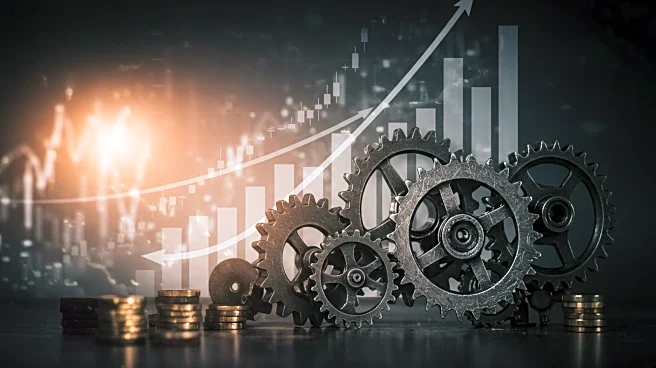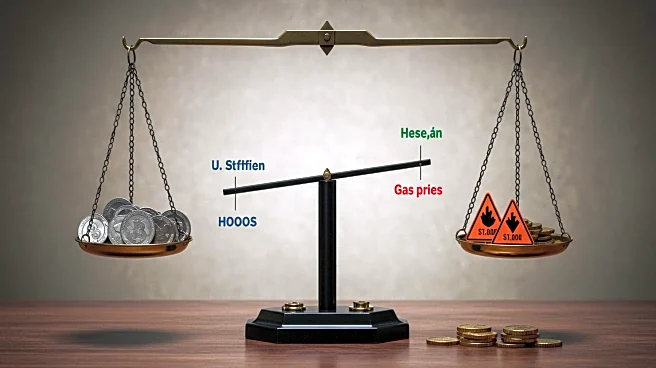What's Happening?
U.S. producer prices experienced a significant increase in July, marking the largest rise in three years, according to the Labor Department. The producer price index (PPI) for final demand jumped 0.9%, driven by surging costs in goods and services. This increase follows a period of stagnation in June and surpasses economists' expectations of a 0.2% rise. Goods prices saw a 0.7% increase, with food prices contributing significantly due to a 1.4% surge. Services prices also rose by 1.1%, the largest gain since March 2022. The report suggests a broad pickup in inflation, potentially affecting the Federal Reserve's anticipated interest rate cut next month. The data highlights the impact of President Trump's import tariffs, which have increased domestic prices, challenging the Fed's policy stance.
Why It's Important?
The rise in producer prices signals potential inflationary pressures that could affect various sectors of the U.S. economy. Businesses are facing squeezed margins due to higher costs for imported goods, which may lead to increased consumer prices. This situation could complicate the Federal Reserve's monetary policy decisions, as they balance inflation control with economic growth. The tariffs' impact on prices underscores the broader economic implications of trade policies, affecting both businesses and consumers. If inflation continues to rise, it could lead to higher interest rates, impacting borrowing costs and consumer spending, ultimately influencing economic growth.
What's Next?
The Federal Reserve's decision on interest rates will be closely watched, as the central bank evaluates the latest inflation data alongside employment figures. Economists anticipate a stronger pass-through of tariff costs to consumer prices in the coming months, potentially leading to modest inflation increases in the latter half of 2025. The Fed's response will be crucial in managing inflation expectations and maintaining economic stability. Additionally, the ongoing debate over trade policies and their economic impact will likely continue, influencing future policy decisions and market reactions.












